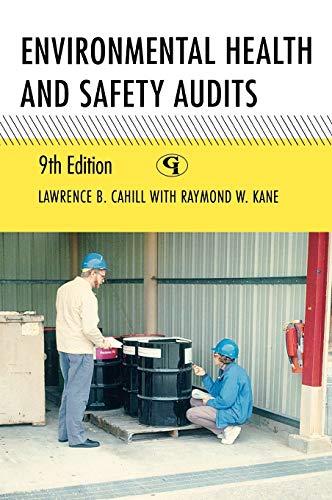Answered step by step
Verified Expert Solution
Question
1 Approved Answer
Case Study: Audit Procedures for Healthcare Organizations As a senior auditor at a renowned accounting firm specializing in healthcare organizations, you've been tasked with conducting
Case Study: Audit Procedures for Healthcare Organizations
As a senior auditor at a renowned accounting firm specializing in healthcare organizations, you've been tasked with conducting an audit of a large hospital's financial statements. The hospital provides a wide range of medical services, including emergency care, surgeries, and specialized treatments. Your audit team has been instructed to ensure compliance with regulatory requirements, assess internal controls, and provide assurance on the accuracy and reliability of financial reporting.
Upon commencing the audit, you initiate various audit procedures tailored to the unique characteristics of healthcare organizations. These procedures include:
Review of Financial Statements: Begin by examining the hospital's financial statements, including the balance sheet, income statement, and statement of cash flows. Verify the accuracy of reported figures and assess compliance with accounting standards such as GAAP Generally Accepted Accounting Principles or IFRS International Financial Reporting Standards
Evaluation of Internal Controls: Assess the effectiveness of internal controls related to financial reporting processes. This involves reviewing policies and procedures for revenue recognition, expense management, and cash handling. Identify any weaknesses or deficiencies in internal controls and recommend improvements to mitigate risks of financial misstatement or fraud.
Testing of Revenue Recognition: Given the significance of patient revenue in healthcare organizations, conduct detailed testing of revenue recognition practices. Verify the completeness and accuracy of revenue recorded from patient services, insurance reimbursements, and government funding. Ensure compliance with regulatory requirements such as CMS Centers for Medicare & Medicaid Services guidelines.
Assessment of Compliance: Evaluate the hospital's compliance with regulatory requirements applicable to healthcare organizations. This includes regulations related to billing and coding practices, patient privacy HIPAA and healthcare fraud and abuse laws Stark Law, AntiKickback Statute Review documentation and procedures to identify any instances of noncompliance and assess the associated risks.
Review of Contractual Agreements: Examine contracts with thirdparty payers, suppliers, and service providers to ensure accuracy and completeness of financial disclosures. Assess the hospital's obligations, commitments, and contingent liabilities arising from contractual arrangements. Verify the consistency of contractual terms with financial reporting disclosures.
Audit of Inventory and Supplies: Conduct a physical inventory count of medical supplies, pharmaceuticals, and other inventory items held by the hospital. Verify the existence, valuation, and ownership of inventory assets and assess the adequacy of inventory controls to prevent theft or loss.
Testing of Capital Expenditures: Review capital expenditure projects, including investments in medical equipment, facilities, and infrastructure. Verify the authorization, valuation, and capitalization of expenditures in accordance with accounting policies and industry practices. Assess the reasonableness of depreciation and amortization methods used for capital assets.
Communication with Management and Governance: Maintain open communication with hospital management, including the CFO, CEO, and board of directors. Discuss audit findings, recommendations, and any significant issues identified during the audit process. Obtain management's responses and explanations regarding accounting treatments and financial disclosures.
Objective Type Question:
Based on the case study, what is a key focus area of audit procedures for healthcare organizations?
A Testing of Revenue Recognition
B Review of Contractual Agreements
C Audit of Inventory and Supplies
D Evaluation of Internal Controls

Step by Step Solution
There are 3 Steps involved in it
Step: 1

Get Instant Access to Expert-Tailored Solutions
See step-by-step solutions with expert insights and AI powered tools for academic success
Step: 2

Step: 3

Ace Your Homework with AI
Get the answers you need in no time with our AI-driven, step-by-step assistance
Get Started


